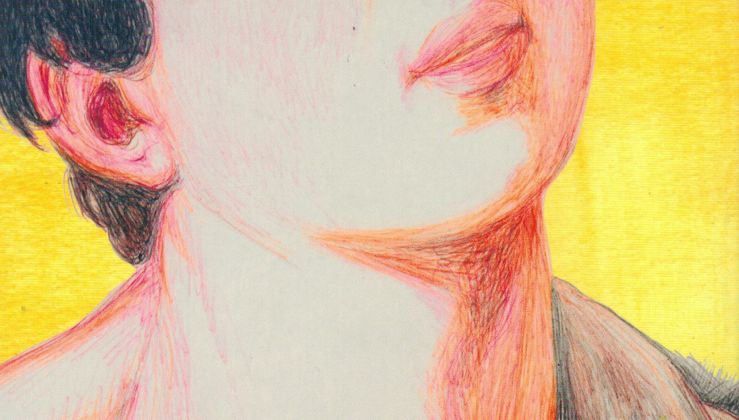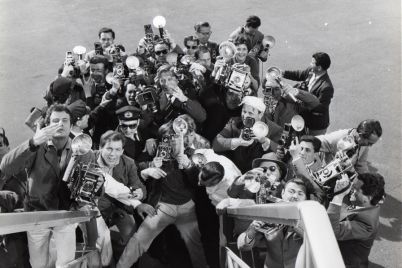In her recent memoir, Monica Meneghetti challenges assumptions about relationships between people – some of the things that bring us together as human beings and some that draw us apart – sometimes with dire consequences. Recently, she sat down with Accenti to discuss her book, her love of food, and her love of life.
Throughout your memoir you address the interplay between food and sensuality with elegant and evocative language, allowing the reader to intellectually understand what is usually a physical or sensual experience.
I don’t think this outcome was deliberate as much as it was a by-product of fully re-entering my own memories through language. There are always so many surprises when others reflect back to me their reading experience. Some of what they see in What the Mouth Wants surprises me, astounds me, even. Some comments have puzzled me, others have been disturbing, leading me to ponder: what exactly is being reflected? Is it the author? The reader? Some hidden, unbidden Muse? Did I fail to communicate accurately, or did my writing unearth something subconscious?
Food is an integral part of every culture. In writing this memoir, which cultural relationships to food surprised you the most?
I love this aspect of food. It allows us to find our common humanity, which is the essential part of addressing most social justice issues. I shared “Uovo Sbattuto” for the first time at an Association of Italian Canadian Writers’ event in Edmonton. People came up to me afterward with tears in their eyes. That I wasn’t alone in my nostalgic connection with that food was a revelation. It literally had not ever occurred to me! – probably because I avoided Italian culture and language for so many years, and because I was writing in isolation for a long time. In that moment, I realized other of my food memories might hit a chord, might be worth sharing. So maybe “Uovo Sbattuto” was antipasto to the eventual What the Mouth Wants meal. The other surprising relationship was more general. I used to scoff at people’s remarks about Italians and their food. “That’s a stereotype,” I would say. Then I wrote What the Mouth Wants. I could no longer deny the deep emotional content surrounding food, the tremendous importance placed on sharing and enjoying meals, its centrality to the culture. It was all on the page for me to see. My writing process had revealed it. So I had to admit, “Yup. Italians and food. It’s a thing.” But maybe it’s a thing for all cultures, as you say.
 Writers “write what they know,” but what does it mean to know someone or something, and who gets to tell which stories?
Writers “write what they know,” but what does it mean to know someone or something, and who gets to tell which stories?
I believe meaningful stories come from who we are. What we know is important in that it shapes who we are which, in turn, shapes our creations. Anaïs Nin said, “We see things not as they are, but as we are. Because it is the ‘I’ behind the ‘eye’ that does the seeing.” The act of creation draws from a deeper well than knowledge. And knowing is interpreted differently, depending on your cultural framework. For some, it is only an intellectual thing. For others, it is more holistic. If knowing something doesn’t change how we act in the world, can we truly claim knowledge of that thing? Historically, those with power have gotten to speak for and about those over whom they exercise power, thereby perpetuating the biases and stereotypes underpinning oppressive systems. With the Internet and other innovations making creative tools and distribution methods accessible, marginalized people are increasingly empowered to create and share, and our narratives are proliferating. This is important because it counteracts what Chimamanda Ngozi Adichie calls “the danger of a single story.” And awareness of the damage done by cultural appropriation is increasing. Creators of culture need to understand this concept and make ethical choices, and collaborate with those to whom the stories belong. Cree artist Kent Monkman said many excellent things about this in Sarah Jay’s Fashion Magazine article (about Kent’s performance piece in which he marries Jean Paul Gaultier).
What would it take for you to feel comfortable writing about something beyond your lived experience?
I’ve never surgically altered myself to facilitate satisfaction of a paper fetish in a dystopic future where products from wood pulp are illegal due to environmental collapse (my screenplay, Pulp Lust). I’ve never been in a love triangle with a cello, either (my short story “Trio,” published in The Winnipeg Review.) So I must be comfortable writing beyond my lived experience. Memoir requires an obsession with truth, absolute loyalty to the personal, and willingness to be vulnerable. So I relish the chance to deviate widely from those requirements when writing fiction or screenplay, where the only limit is my imagination. I feed it with experiences and information, then welcome whatever it creates from them. It’s important not to censor yourself in those early stages. Only much later do I make decisions about what is publishable.
In your memoir, social pressure, fear of violence – whether emotional or physical – and the prospect of rejection from the eusocial group are powerful forces that act on members of the queer community. How much was writing this memoir a cathartic experience for you?
If you want to cling to your existing perceptions and identity, don’t write about your life. That’s what I tell folks in my writing classes. Maybe it’s the literary equivalent of the observer effect in physics. If you pay attention to your life and memories in the way required to write well, change ensues. So yes, writing What the Mouth Wants was cathartic, in different ways, at different stages of the process.
Finding the right publisher was a catharsis on its own. I left a place I loved in order to find more support and community in Vancouver. With that came a greater feeling of safety, and I began seeking publication in 2016. Once I had Vici Johnstone and Dagger Editions behind the project, I saw all the ways in which being so isolated and remote from queer readers had made me downplay or shy away from putting certain aspects of my identity onto the page – and not just in this manuscript, but in other past writing as well. Once I had a queer publisher, I was able to make the book more what I wanted it to be, what it needed to be.
The timing of the offer to publish was also a catharsis, not only because it came shortly after my father’s death. A week after getting the offer, I was at Wild Fruit, a queer women’s dance in Davie Village. I’d taken video of the event on my phone. It was pitch black, but the audio was what mattered. All you could hear was the joyful voices of queer women in a packed club, dancing and singing their freedom. I’d recorded it as a memento of the sound of sheer joy. While attempting to upload it to Facebook, I learned there’d been a mass shooting at a gay nightclub. 49 people had been killed and 53 wounded. This hate crime in Orlando, Florida, made me recalculate the level of risk that publishing might involve. Those who have witnessed people like themselves being killed and still stood up to say, “I’m one of them” will understand what this takes.
Never mind coming out so publicly as queer. Being out as non-monogamous is a whole other level of challenge. You have to remember, I was a hinterqueer when I wrote the initial drafts. It was also before the Supreme Court ruling of 2011, which effectively made unformalized polyamorous relationships legal. Prior to that, there was some question as to the legality of multi-partner relationships because they tend to be confused with polygamy. Unlike polyamory, which is egalitarian and secular, polygamy is largely practiced in a patriarchal and religious context. The ruling represented a recognition of the distinction between these forms of relationships – a distinction illustrated to the Court through sworn affidavits from polyamorous individuals who came forward through the Canadian Polyamory Advocacy Association initiative. So, in the wake of the mass shooting, I had to overcome my fear in order to connect with and hopefully help others like me. Knowing others before me had needed much more courage than I did in that moment, knowing their books probably saved my life, I published.
Did it allow you to access your younger self and to understand her, or empathize with her, and perhaps banish fears you both have?
I think so. I know I deeply came to terms with myself, my history, my losses, and growth. Through tasting life twice (Nin again), I was able to let go of grief and anger I had carried around a long time.
What is unique about navigating queerness and non-monogamy as a person of Italian heritage?
I think my memoir speaks to this better than I could briefly do here. As does my first-person essay in the Globe and Mail. In short, being queer and non-monogamous challenges cherished and long-held beliefs and values of Italian culture. At least part of being Italian means reconciling centuries of history, tradition and religion with contemporary lifestyles and knowledge. The depth and richness of a culture can be both bane and boon… Yet, is that unique? We’re all engaged in this reconciliation between past and present. Maybe memoirists most of all.
What the Mouth Wants (2017) is published by Caitlin Press.
Liana Cusmano is Accenti Editor-at-large.




